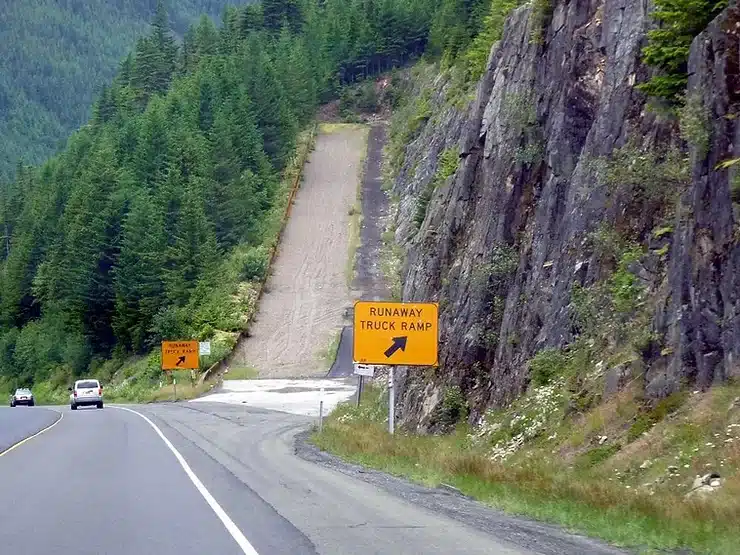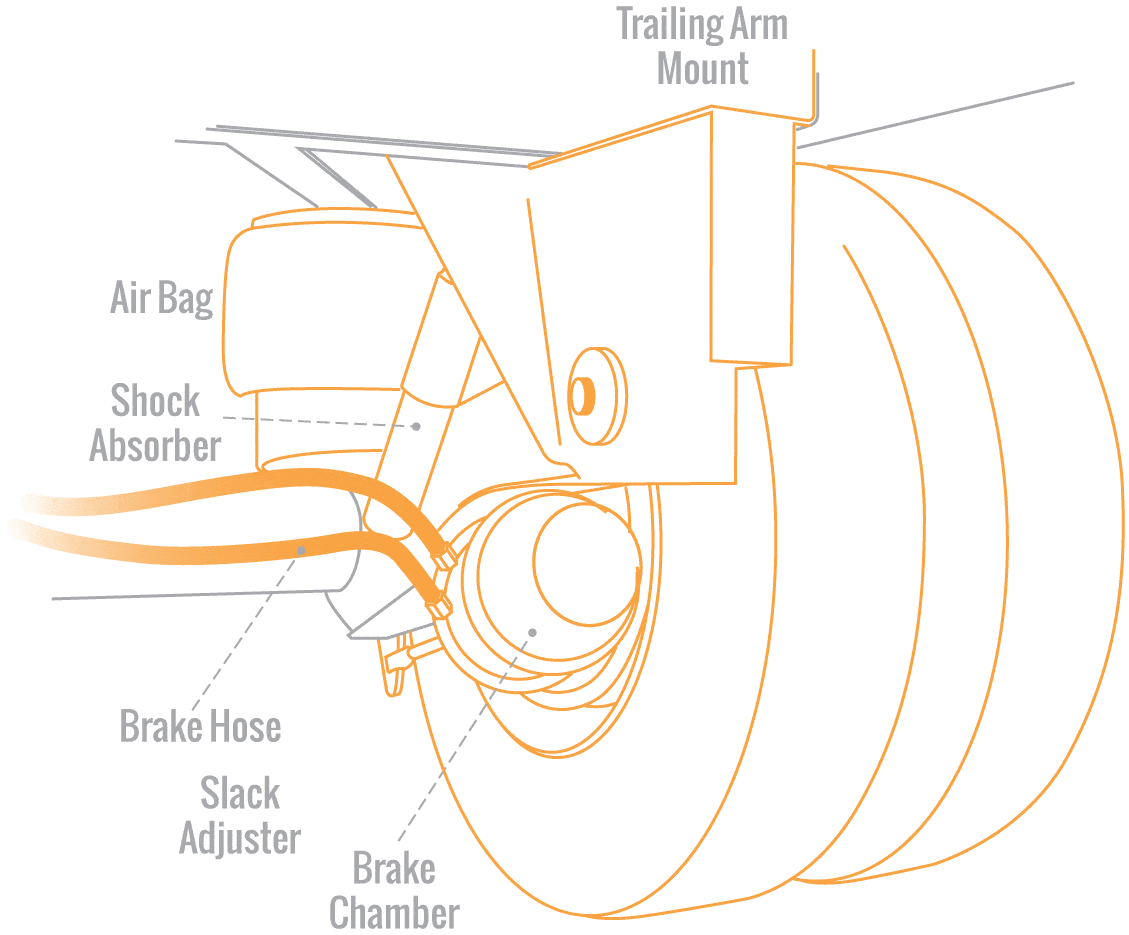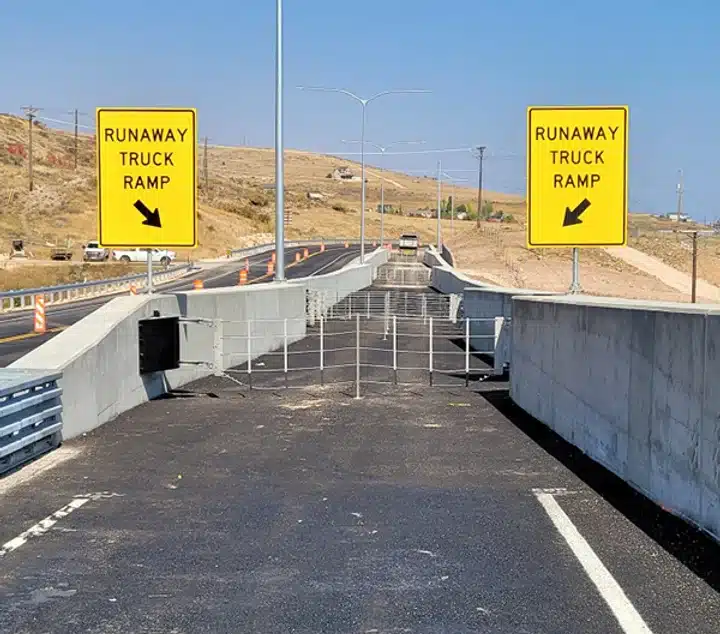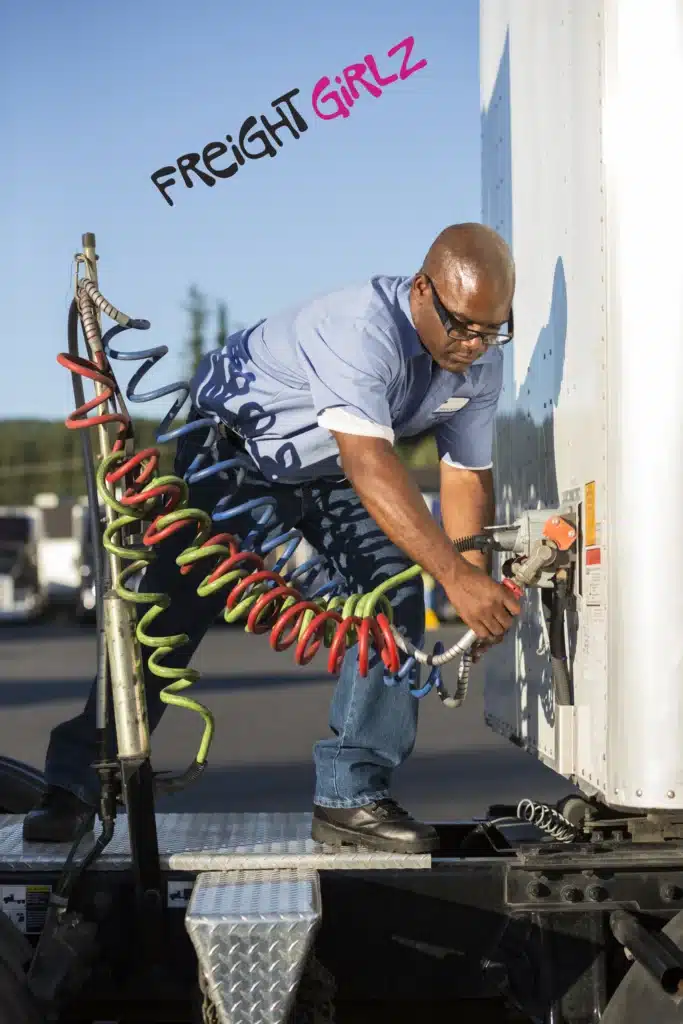
Runaway Ramp

Runaway Ramp
In the rare and dangerous event that your truck experiences a full brake failure, staying calm and focused is your best chance of making it out safely.
Driving a fully loaded semi through steep mountain terrain is a serious responsibility. But with the right preparation — including thorough pre-trip inspections, knowing the warning signs of brake failure, and understanding how to react in an emergency — you can turn a life-threatening event into a controlled situation. 💪
At Freight Girlz, we emphasize safety and operational excellence in everything we do. Whether you’re hauling Dry Vans, Reefers, or Open Deck, your safety always comes first.
Navigating steep mountain grades in a fully loaded tractor-trailer can be nerve-wracking — especially when faced with the terrifying risk of brake failure. But with the right preparation, awareness, and decision-making, you can stay in control and minimize danger.
Below are essential tips to help you prevent brake loss, recognize potential issues early, and apply safe stopping techniques if your brakes fail on a mountain highway.
Brake safely on descents by staying in lower gears, engaging your Jake Brake, and avoiding riding the brakes. Let gravity work with you — not against you.
Remember: You can always stop at the top and descend slowly — but you can’t stop once your brakes are gone.

Awareness is your first line of defense. Being able to spot the early warning signs of brake failure can help you take action before the situation becomes critical — especially when hauling loads on mountainous terrain.
If you lose brakes on a steep descent, staying calm and following these steps can be the difference between disaster and survival.
Runaway truck ramps exist for one reason — to safely stop your vehicle when all else fails. Know how to use them:


"Freight Girlz is dedicated to providing professional and reliable truck dispatch services tailored for owner-operators and fleets. Our commitment to industry expertise and client success ensures your logistics run smoothly, allowing you to focus on the road ahead."

